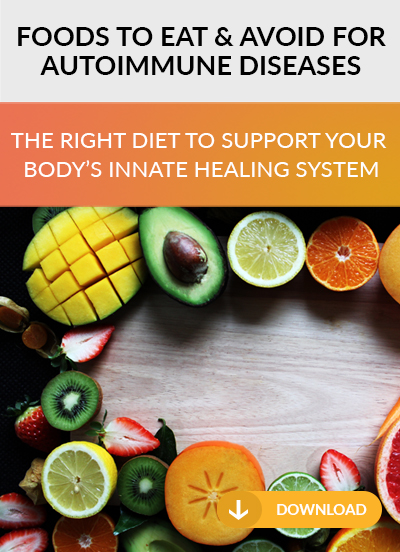Today, most people are eating way too many Omega-6 fatty acids. At the same time, consumption of animal foods high in Omega-3 is the lowest it has ever been. A distorted ratio of these polyunsaturated fatty acids may be one of the most damaging aspects of the Western diet.
Why Care About Omega-6 and Omega-3 Fatty Acids?
Omega-6 and Omega-3 fatty acids are called polyunsaturated because they have many double bonds (poly = many). Our bodies don’t have the enzymes to produce them and therefore we must get them from the diet. If we don’t get any from the diet, then we develop a deficiency and become sick. That is why they are termed the “essential” fatty acids.
However, these fatty acids are different than most other fats. They are not simply used for energy or stored, they are biologically active and have important roles in processes like blood clotting and inflammation.
Here’s the thing: Omega-6s and Omega-3s don’t have the same effects. Omega-6s are pro-inflammatory, while Omega-3s have an anti-inflammatory effect.
Omega-6s are pro-inflammatory, while Omega-3s have an anti-inflammatory effect.
Of course, inflammation is essential for our survival. It helps protect our bodies from infection and injury, but it can also cause severe damage and contribute to disease when the inflammatory response is inappropriate or put simply, a diet that is high in Omega-6 but low in Omega-3 increases inflammation, while a diet that includes balanced amounts of each reduces inflammation.
Soybean oil is currently the biggest source of Omega-6 fatty acids in the USA, because it is really cheap and found in all sorts of processed foods. Start reading the ingredient list on packages today and you’ll see it for yourself!
The problem today, is that people who eat a typical Western diet are eating way too many Omega-6s relative to Omega-3s.
What’s the main problem? The Western Diet. Not only are people eating much less Omega-3 than we used to, but they are eating large amounts of processed seed-and vegetable oils, which are loaded with Omega-6.
We simply didn’t have the technology to process these oils until about a 100 years ago and we have NOT had time to genetically adapt to these high amounts of Omega-6. There has been a dramatic increase in soybean oil consumption in the USA. In fact, Americans now get almost 20% of their calories from a single food source – soybean oil – with almost 9% of all calories from the omega-6 fat linoleic acid (LA) alone! So the unnatural fats that we are eating are leading to actual changes, both in our body fat stores and cell membranes all over the body. That’s a scary thought.
A high amount of Omega-6 in cell membranes is strongly associated with the risk of cardiovascular disease, which makes perfect sense given their pro-inflammatory effects.
There have been several controlled trials where people replaced saturated fats with Omega-6 fats and had a significantly increased risk of heart disease.
Conversely, Omega-3s reduce the risk of heart disease.
A high Omega-6 intake is also associated with violence and depression, while Omega-3s improve all sorts of mental disorders like depression, schizophrenia and bipolar disorder.
Another problem with a high Omega-6 intake is the fact that the double bonds in the fatty acid molecules are very reactive.
They tend to react with oxygen, forming chain reactions of free radicals that can cause damage to molecules in cells, which is one of the mechanisms behind aging and the onset of cancer.
Fortunately, optimizing your intake of these fatty acids is relatively simple. Here’s how:
1. Avoid Vegetable Oils High in Omega-6
The single most important thing you can do to reduce your Omega-6 intake is to avoid processed seed- and vegetable oils high in Omega-6, as well as the processed foods that contain them. Butter, coconut oil, lard, palm oil and olive oil are all relatively low in Omega-6 (although I don’t necessarily recommend increasing your butter and lard intake!!)
Sunflower, Corn, Soybean and Cottonseed oils are by far the worst. I recommend you avoid these like the plague.
Be aware that even so-called health foods can contain vegetable oils. It is crucial to read labels! Please look past the “Nutrition Facts” all the way to the ingredient list. If it says “vegetable oil” assume it is an Omega-6 heavy oil and put it down.
2. Eat Animal Foods That Are High in Omega-3
Animal foods are the best sources of the preformed Omega-3 fatty acids, EPA and DHA. One problem today is that animals are usually fed grain-based feeds with soy and corn. This reduces the Omega-3 content, so the polyunsaturated fats in the meat are mostly Omega-6. Therefore, if you can afford it, grass-fed meat is definitely optimal. However, even conventionally raised meat is healthy, as long as it is not processed.
Some conventionally raised meats like chicken and pork are particularly high in Omega-6. If you want to bring your intake of Omega-6 down as much as possible, then it makes sense to choose the leaner portions of those meats.
It is also best to buy pastured or Omega-3 enriched eggs, which are much higher in Omega-3 compared to eggs from hens that were fed grain-based feeds.
By far the best and healthiest way to increase your Omega-3 intake is to eat seafood once or twice per week. Fatty fish like salmon is a particularly good source. Wild caught fish is best, but even farmed is better than no fish at all. However, do some research on the product you are buying and the contamination levels in the area where it is farmed.
3. Consider taking a fish oil supplement
If you eat a lot of conventionally raised meats and/or don’t eat much seafood, then you should consider taking a fish oil supplement.
I recommend Pure Omega Liquid and stock it here at the clinic. It’s a purified fish oil from sustainably sourced anchovy, sardine, mackerel and herring. It contains 2,300 mg or total omega-3 fatty acids, along with 1,500 mg EPA and 500 mg of DHA! Wow!There are some plant sources of Omega-3, like flax and chia seeds. However, these contain a type of Omega-3 called ALA. Humans are inefficient converters of ALA into the active forms, EPA and DHA.
For this reason, animal sources of Omega-3 like fish and grass-fed animals are best, but remember if you are vegan, plant sources of omega-3 are better than none! Check out my blog on vegan sources of Omega-3 with lots of recipe links to incorporate these foods into your diet.
Bottom Line:
Most people are storing immense amounts of Omega-6 fatty acids in their body fat stores and it can take years to get rid of them.
This is a simple guide to optimize your balance of the Omega fats:
- Avoid vegetable oils high in Omega-6 (and the processed foods that contain them).
- Eat plenty of Omega-3 rich animals, including something from the sea at least once or twice a week.
- If needed, supplement with an Omega-3 source like fish oil.
For more personalized help balancing your body’s needs, contact me for a consultation.




